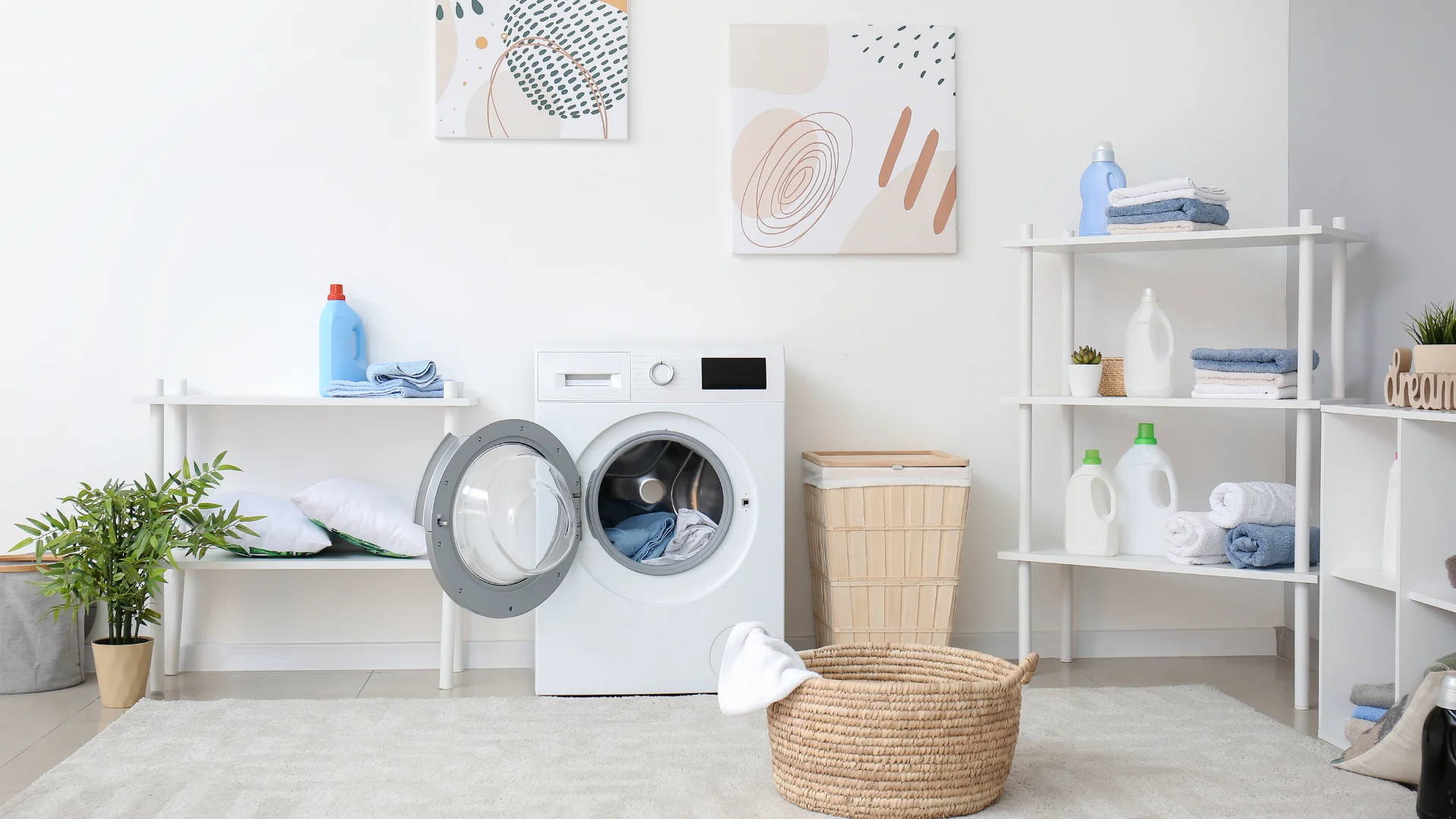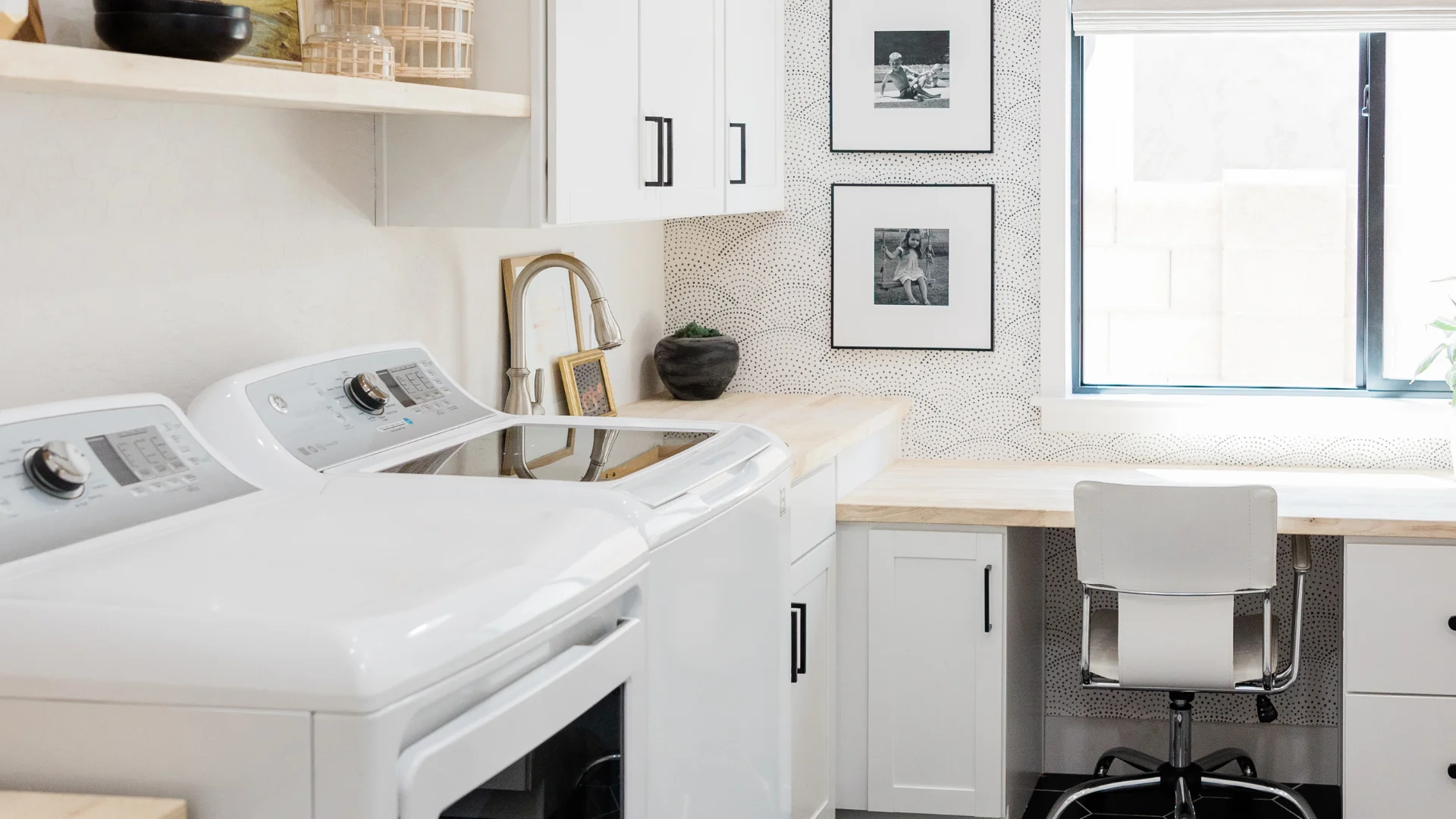Introduction
Transforming your laundry room can significantly enhance its functionality and aesthetics, making laundry chores more enjoyable and efficient. This comprehensive guide covers everything you need to know about DIY and custom home improvement projects for your laundry room, including who can do it, how to get started, average costs, the best projects, the cheapest and easiest projects, usual tools, and safety tips.
Who Can Do It?
DIY laundry room projects are suitable for homeowners with varying levels of experience. From simple updates to more complex renovations, there are tasks that can fit different skill levels. Beginners can handle painting and installing shelves, while more experienced DIYers can take on cabinetry and plumbing upgrades.
How to Get Started
Planning and Design
Start by assessing your needs and the current state of your laundry room. Consider what improvements will make the space more functional and visually appealing. Sketch a layout, decide on a color scheme, and list the materials and tools you’ll need.
Budgeting
Create a budget based on your planned projects. On average, a laundry room remodel can cost between $1,300 and $15,000, with the national average around $8,100. Basic updates, like painting and installing new shelves, fall on the lower end, while extensive remodels involving new plumbing and custom cabinetry can reach the higher end (Bob Vila) (The Spruce).
Permits and Regulations
Check if any permits are required for your project. Small updates may not need permits, but major changes, especially those involving electrical or plumbing work, typically do.
Average Cost of Projects
Cost Breakdown
- Materials and Finishes: 30-40% of the total cost, including flooring, countertops, cabinets, paint, and lighting fixtures.
- Appliances and Fixtures: 20-30% of the total cost, depending on the brands and features chosen.
- Labor and Contractor Fees: 30-40% of the total cost, covering professional installation and expertise.
- Additional Costs: 10-20% for permits, disposal fees, and unexpected expenses (Storables) (Homewyse).
Best Projects
High-Impact Projects
- Cabinet Installation: Custom cabinets can improve storage and organization. Costs range from $250 to $2,000 depending on the quality and customization (Bob Vila) (Homewyse).
- Countertops: Installing countertops over your washer and dryer provides a space for folding clothes and organizing supplies. Butcher block or laminate are popular choices.
- Utility Sink: Adding a utility sink enhances functionality for hand-washing delicate items and cleaning up messes. Costs range from $560 for basic models to $1,000 for high-end options (Storables).
Popular Features
- Hanging Rods: Install rods for hanging clothes to dry. A tension rod or a custom-built rod can serve this purpose well (Budget Dumpster).
- Foldaway Drying Racks: These save space and are useful for air-drying clothes. Prices vary, but many are affordable and easy to install (Budget Dumpster).
- Lighting: Good lighting is essential. Adding under-cabinet lighting or new ceiling fixtures can brighten the space and make it more functional.
Cheapest Projects
Budget-Friendly Ideas
- Painting: Refreshing the walls with a new coat of paint is cost-effective and has a big visual impact.
- Shelving: Installing open shelves for storage is affordable and enhances organization.
- Decorative Backsplashes: Peel-and-stick tiles can add a stylish touch without breaking the bank.
DIY-Friendly Projects
- Installing Hooks and Racks: Simple hooks and racks for hanging ironing boards or cleaning supplies are inexpensive and easy to install.
- Using Tension Rods: Tension rods are versatile for creating hanging space without the need for drilling or permanent fixtures.
Easiest Projects
Beginner-Friendly Tasks
- Painting Walls and Cabinets: This is a straightforward project that requires minimal tools and expertise.
- Adding Storage Baskets: Use baskets and bins to organize laundry supplies, which is easy and inexpensive.
- Installing New Hardware: Updating knobs and handles on cabinets and drawers is a quick way to refresh the space.
Usual Tools
Essential Tools for DIY Projects
- Cordless Drill: For drilling holes and driving screws.
- Level: Ensures your installations are straight and even.
- Measuring Tape: For accurate measurements.
- Stud Finder: Locates studs in walls for secure installations.
- Utility Knife: Useful for cutting materials like drywall and insulation.
- Screwdrivers: Both flathead and Phillips types for various tasks.
- Pliers: For gripping and bending wires or other materials.
Safety Considerations
General Safety Tips
- Wear Protective Gear: Always use gloves, safety goggles, and masks when necessary.
- Turn Off Power: When working with electrical components, ensure the power is turned off at the breaker.
- Proper Ventilation: Use proper ventilation when working with paints, adhesives, or any chemicals.
- Use the Right Tools: Ensure you are using the correct tools for the task to avoid accidents.
- Follow Instructions: Adhere to manufacturer instructions for all tools and materials.
Specific Safety Measures
- Handling Heavy Items: Use proper lifting techniques to avoid back injuries. Lift with your legs, not your back.
- Secure Installations: Ensure shelves, cabinets, and rods are securely installed to avoid them falling.
- Electrical Safety: Hire a professional for any major electrical work to ensure safety and compliance with local codes.
Conclusion
Remodeling your laundry room can be a rewarding project that enhances your home’s functionality and aesthetic appeal. By planning carefully, budgeting appropriately, and focusing on projects that offer high returns and improved utility, you can create a space that makes laundry tasks more enjoyable. Always prioritize safety, use the right tools, and know when to call in professionals for more complex tasks. With the right approach, your DIY laundry room project can transform an overlooked space into a highly functional and attractive area of your home.






